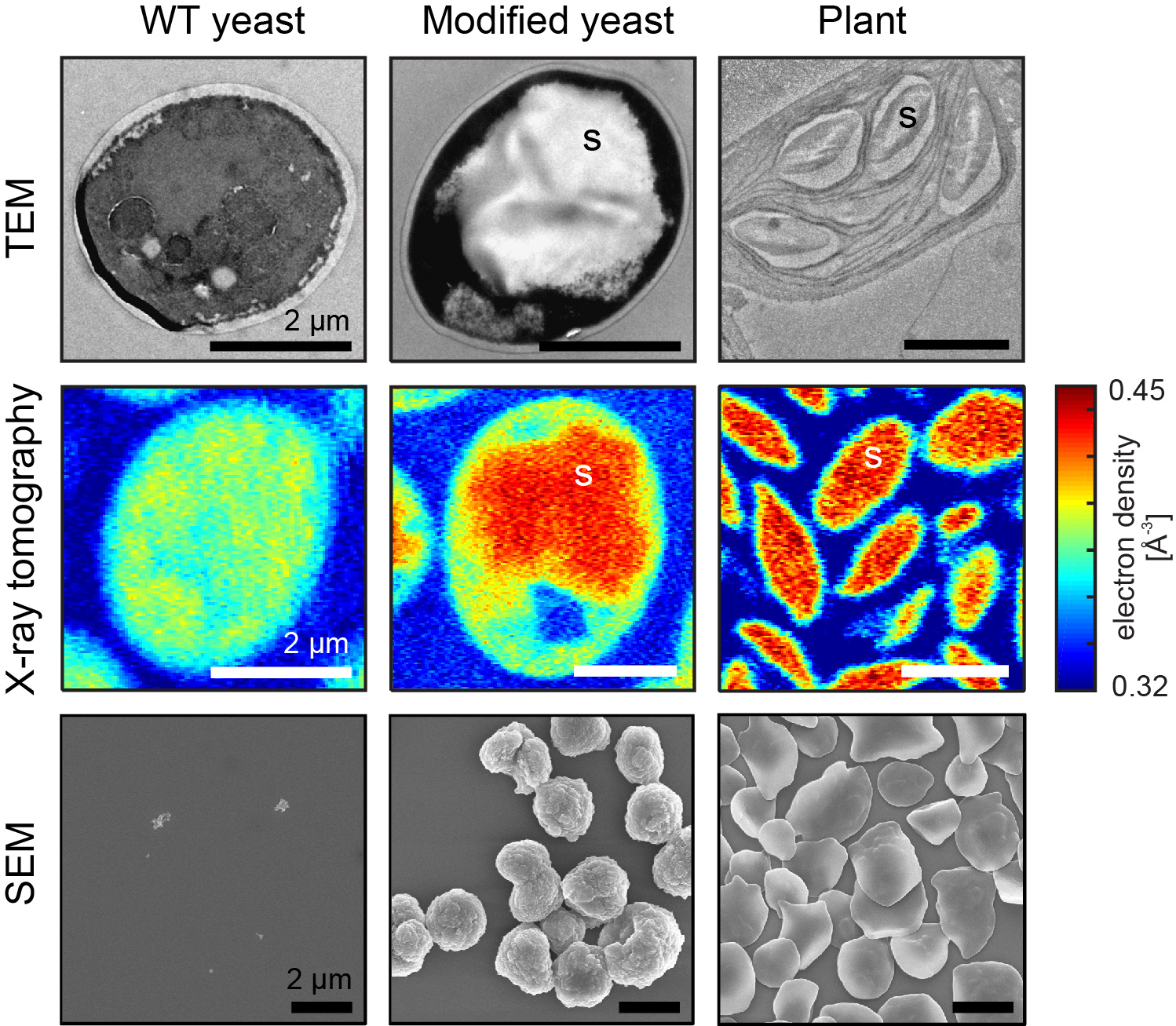Recreating the synthesis of starch granules in yeast
Most plants and algae produce a glucose polymer called starch, which provides them with a dense store of energy.
Barbara Pfister, Antoni Sánchez-Ferrer, Ana Diaz, Kuanjen Lu, Caroline Otto, Mirko Holler, Farooque Razvi Shaik, Florence Meier, Raffaele Mezzenga, Samuel C Zeeman
ETH Zürich, Switzerland; Paul Scherrer Institut, Switzerland
DOI: http://dx.doi.org/10.7554/eLife.15552
Published November 22, 2016
Cite as eLife 2016;5:e15552
Abstract:
Most plants and algae produce a glucose polymer called starch, which provides them with a dense store of energy. Starch is also a major nutritive component of our staple crops and the main carbohydrate in our diet. Furthermore, the unusual physical properties of starch render it a valuable raw material with manifold industrial applications, such as a thickener, an adhesive, as a component of biodegradable plastics and as a coating of paper. Despite intense research, we fully understand neither its biosynthesis nor how its structure controls its physical properties. We recently described a novel platform for the rapid and systematic analysis of the enzymes involved in starch biosynthesis. This system is based on the budding yeast Saccharomyces cerevisiae, which is quick to grow and can be genetically engineered much more easily and rapidly than plants.
Figure 1. Engineered yeast can produce starch. Upper panels: Transmission electron microscopy (TEM) of a wild-type (WT) yeast cell (left), a modified yeast strain containing all seven enzymes from Arabidopsis (middle) and a chloroplast from wild-type Arabidopsis leaves (right). “S” indicates starch granules. The starch granules in the plant sample are surrounded by thylakoid membranes of the chloroplast. Middle panels: Electron density maps of intact yeast cells (left and middle) and purified Arabidopsis leaf starch granules (right) obtained by cryo X-ray ptychographic tomography. Regions in red have an electron density of ~0.44 e- Å-3, corresponding to a mass density of ~1.36 g mL-1. Lower panels: Scanning electron microscopy (SEM) of purified granules from yeast and Arabidopsis plants. No granules could be purified from wild-type yeast. (Figure: Ana Diaz, Paul Scherrer Institute, and Barbara Pfister, ETH Zurich).

